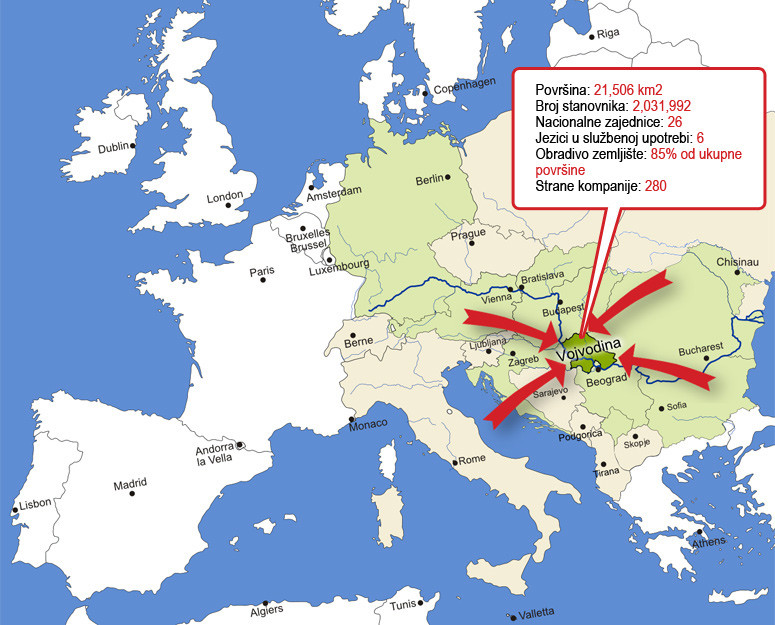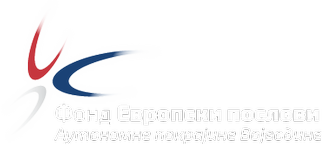About Vojvodina
The Autonomous Province (AP) of Vojvodina is located in the north of the Republic of Serbia, in the Pannonian Plain in the region of Central Europe, on an area of 21,506 km2. Vojvodina has a favorable geographical position and with the productivity of the workforce, a long tradition in many areas of business, as well as the development of new industries, numerous financial and tax incentives, Vojvodina is an attractive business environment. In addition, more than 1.5 ha of fertile arable land represents a great potential for agriculture, agricultural business, tourism and the use of renewable energy sources.
When it comes to tourism, Vojvodina occupies an increasingly important place on tourist maps. Novi Sad, the administrative and cultural center of Vojvodina, is the second largest city in Serbia and hosts two important events: the EXIT festival, the largest music festival in Southeast Europe, and the International Agricultural Fair, the largest and most important event of its kind in the region. On the other hand, the tourist offer of Vojvodina is much richer than the above: rivers, lakes, Fruška Gora with its monasteries, Deliblatska peščara, farms, etc.
Two major road routes: Pan-European “Corridor 7”, Danube and “Corridor 10” pass through Vojvodina. The Danube is navigable along its entire length through Vojvodina, which increases the importance of Vojvodina as a transit region. When you add the rivers Sava, Tisa and the Danube-Tisa-Danube canal, Vojvodina has more than 2,000 km of waterways, which make up about 93% of Serbia’s total inland waterways.
Like the Danube, which is one of the largest international rivers, Vojvodina is recognizable for its national, cultural and linguistic diversity. Twenty-six national communities live in Vojvodina and there are six languages in official use. Therefore, Vojvodina is rightly called “Europe in miniature”.













